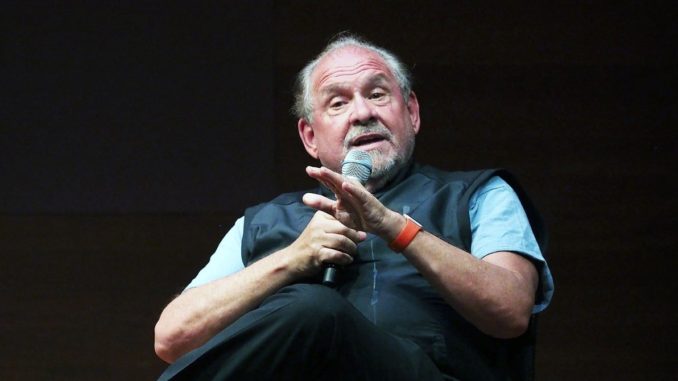
It’s the most dangerous pandemic in our lifetime.
We are being asked to do things, certainly, that never happened in my lifetime—stay in the house, stay 6 feet away from other people, don’t go to group gatherings. Are we getting the right advice?
When will we be able to leave the house and go back to work?
I have a very good retrospect-oscope, but what’s needed right now as a prospecto-scope. If this were a tennis match, I would say advantage virus right now. But there’s really good news from South Korea—they had less than 100 cases today. China had more cases imported than it had from continuous transmission from Wuhan today. The Chinese model will be very hard for us to follow. We’re not going to be locking people up in their apartments, boarding them up. But the South Korea model is one that we could follow. Unfortunately, it requires doing the proportionate number of tests that they did—they did well over a quarter of a million tests. In fact, by the time South Korea had done 200,000 tests, we had probably done less than 1,000.
Plus: How can I avoid catching it? Is Covid-19 more deadly than the flu? Our in-house Know-It-Alls answer your questions.
Have we now missed the opportunity that early testing would have given us?
Absolutely not. Tests would make a measurable difference. We should be doing a stochastic process random probability sample of the country to find out where the hell the virus really is. Because we don’t know. Maybe Mississippi is reporting no cases because it’s not looking. How would they know? Zimbabwe reports zero cases because they don’t have testing capability, not because they don’t have the virus. We need something that looks like a home pregnancy test, that you can do at home.
If you were the president for one day, what would you say in the daily briefing?
I would begin the press conference by saying “Ladies and gentlemen, let me introduce you to Ron Klain—he was the Ebola czar [under President Barack Obama], and now I’ve called him back and made him Covid czar. Everything will be centralized under one person who has the respect of both the public health community and the political community.” We’re a divided country right now. Right now, Tony Fauci [head of the National Institute of Allergy and Infectious Diseases] is the closest that we come to that.
Are you scared?
I’m in the age group that has a one in seven mortality rate if I get it. If you’re not worried, you’re not paying attention. But I’m not scared. I firmly believe that the steps that we’re taking will extend the time that it takes for the virus to make the rounds. I think that, in turn, will increase the likelihood that we will have a vaccine or we will have a prophylactic antiviral in time to cut off, reduce, or truncate the spread. Everybody needs to remember: This is not a zombie apocalypse. It’s not a mass extinction event.
Should we be wearing masks?
The N95 mask itself is extremely wonderful. The pores in the mask are three microns wide. The virus is one micron wide. So you get people who say, well, it’s not going to work. But you try having three big, huge football players who are rushing for lunch through a door at lunchtime—they’re not going to get through. In the latest data I saw, the mask provided 5x protection. That’s really good. But we have to keep the hospitals going and we have to keep the health professionals able to come to work and be safe. So masks should go where they’re needed the most: in taking care of patients.
How will we know when we’re through this?
The world is not going to begin to look normal until three things have happened. One, we figure out whether the distribution of this virus looks like an iceberg, which is one-seventh above the water, or a pyramid, where we see everything. If we’re only seeing right now one-seventh of the actual disease because we’re not testing enough, and we’re just blind to it, then we’re in a world of hurt. Two, we have a treatment that works, a vaccine or antiviral. And three, maybe most important, we begin to see large numbers of people—in particular nurses, home health care providers, doctors, policemen, firemen, and teachers who have had the disease—are immune, and we have tested them to know that they are not infectious any longer. And we have a system that identifies them, either a concert wristband or a card with their photograph and some kind of a stamp on it. Then we can be comfortable sending our children back to school, because we know the teacher is not infectious.
